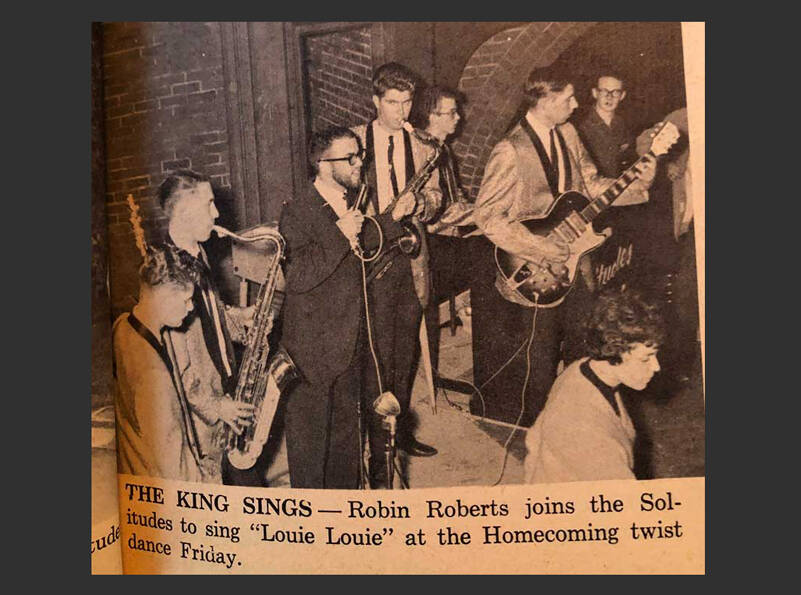By Morf Morford, Tacoma Daily Index
Tacoma is one of those places that seems to be permanently situated well under the radar in about every way. For whatever reason, we, unlike a few other cities I could name, are not at our most comfortable in the limelight.
When it comes to music, for example, Tacoma is perpetually lucky to be mentioned in the tiniest of footnotes – if that.
But I think most of us like it that way. We, as a city and as a cultural force have been successfully, if not relentlessly, avoiding fame and recognition for decades, if not generations.
But it’s also fair to say that music, as we have known it for the past half century or so around the world, would not look even remotely like it does without the surging influence of Tacoma.
“Rockin’ Robin” Roberts
To put it mildly, Tacoma, and rock and roll, would never be the same after the arrival of “Rockin’ Robin” Roberts (1940-1967).
Roberts attended Jefferson Elementary School in Tacoma and, was, among other things, a crosswalk guard. After attending Mason Junior High, Roberts entered Stadium High in 1955. From most accounts, Roberts was what we would now call a polymath – someone with talent and aptitude which he could turn and focus (or not) on any topic that kept his attention – he served in a wide variety of school clubs and other activities and was also an honor roll student.
He graduated from UPS then attended Oregon State University for his biochemistry masters degree, and also served in the United States Marine Corps Reserve. He worked as a chemist for a short time before his death, but rock music – with a hefty influence of R&B was his calling.
As a (very young) teenager, he had a part-time job in a record store that gave him access to music that was not on the pop charts of the day.
As a 14 year old, he sang (solo) Little Richard songs from a bench at the Puyallup Fair. And if you know anything about Little Richard, famous for his controversial hit “Good Golly, Miss Molly”, it is not quite what you’d expect a white teenager to be singing in public. In Puyallup.
Among his accidental audience that day were two Tacoma teenagers who had recently formed their own band, the Blue Notes – two guys who would become Tacoma music legends, “Little Bill” Engelhart and John “Buck” Ormsby. With no name recognition, and a miniscule budget (and all of them way under 18), they just wanted to play music and party, so they rented halls, marketed and hosted dances – and thus began the DIY (do-it-yourself) ethic in the music industry, and the impromptu rock ‘n’ roll “happening”.
Finding his voice
Roberts could put a spin on any song and turn it into his own. The song he was most famous for making his own was, of course, the song (and opening riff) known around the world – “Louie, Louie”.
Roberts could be considered one of the first charismatic if not hyperactive lead singers – he was known for jumping around the stage – including on nearby pianos, with a hypnotic grace all his own.
At one over-capacity Blue Notes’ dance, Tacoma police tried shutting it down. Roberts proposed that the band be allowed to play one more song to avoid a riot. The police agreed, then Roberts performed a half-hour long version of “Louie, Louie” – which got the band banned in town by the Tacoma City Council. (The ever vigilant Tacoma City Council also banned The Sonics, in an attempt, apparently, to protect the youth of America, or at least Tacoma, from the perils of rock music.)
“Louie, Louie”, with its benign, but mumbled lyrics, was famous for keeping the FBI, if not rock and roll critics, busy for months looking for cryptic or offensive hidden messages.
“Louie, Louie”, was, of course, covered by (and is still covered by) multiple bands, but was turned into its familiar immediately recognizable form by Roberts. The song became a regional, and then generational, anthem known and recognized around the world. You can see a history of this genre-defining song here, including a link to parts of the FBI investigation into the questionable lyrics.
Roberts was killed in a car accident outside of San Francisco in late 1967 – becoming Tacoma’s contribution to the 27 Club – which includes musicians Kurt Cobain, Amy Winehouse and Jimi Hendrix, who each died at age 27. A friend of his told me that Roberts was probably well on his way to getting a PhD. Another told me that, a young man like Roberts, involved in the music scene at what was, in 1967, centered in San Francisco, would have certainly been, at minimum, aware of the drug of choice at that time – LSD which, in December of 1967, was still legal.
You can see more on Roberts here. If you are interested in other aspects of the reaches of music, from, in and around Tacoma, take a look here.






